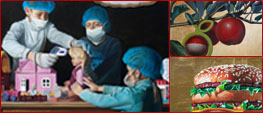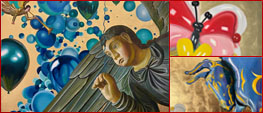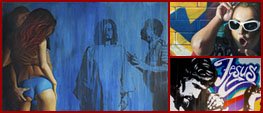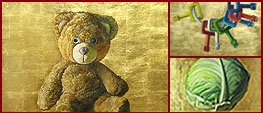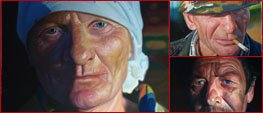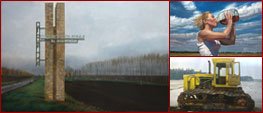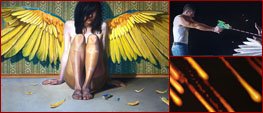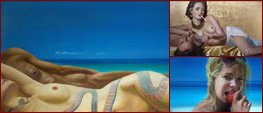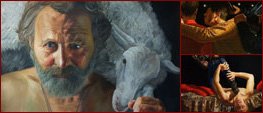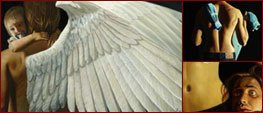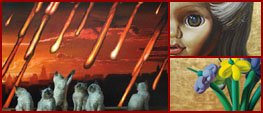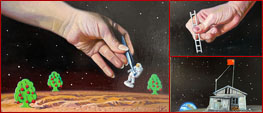
oil on canvas, gilding, 100x100cm, 2022

oil on canvas, gilding, 100x100cm, 2022

oil on canvas, gilding, 100x100cm, 2023

oil on canvas, gilding, 100x100cm, 2022

oil on canvas, gilding, 100x100cm, 2022

oil on canvas, gilding, 100x100cm, 2022

oil on canvas, gilding, 100x100cm, 2022

oil on canvas, gilding, 100x100cm, 2022

oil on canvas, gilding, 100x100cm, 2022

oil on canvas, gilding, 100x100cm, 2022

oil on canvas, gilding, 100x100cm, 2022

oil on canvas, gilding, 100x100cm, 2022

oil on canvas, gilding, 100x100cm, 2022

oil on canvas, gilding, 100x100cm, 2022

oil on canvas, gilding, 100x100cm, 2022

oil on canvas, gilding, 100x100cm, 2022

oil on canvas, gilding, 100x100cm, 2022

oil on canvas, gilding, 100x100cm, 2022
GARDEN OF EARTHLY DELIGHTS
The project «Garden of Earthly Delights» examines the area of the unknown in human culture - the image of Paradise.
The unconditional refrain of the title of the exhibition is the famous work by Hieronymus Bosch "The Garden of Earthly Delights", where the outstanding master expressed his idea of Heaven and Hell in numerous artistic images. This triptych does not have an exact title. "Garden of Earthly Delights" is only the approved name that was given to the work by the scientific community. The picture is rightfully considered one of the most difficult (according to some art critics - the most difficult) to interpret in the world of painting. This is not surprising, since this topic has many interpretations, not only in various religious traditions and beliefs, but also within one specific religious doctrine. The human ideas about Paradise over the centuries have changed and varied. For example, the ideas of Paradise of a medieval person differed in many respects from those of a person of the Enlightenment. The ideas about Paradise of a medieval person were inspired by amazing ideas about India, which captivated the imagination of Europeans people with its miracles since the time of Alexander the Great. There was a popular and fairly widespread belief that it was in India that Eden, lost by men, was located. Hundreds of books have been written on this subject, both religious and scientific. Even non-religious people have their own ideas about Paradise.
In my opinion, these ideas were most accurately expressed by Sergey Dovlatov: “... I didn’t even ask - where will we meet? It didn’t not matter. Maybe in Paradise. Because heaven is the meeting place. And nothing more. A general cell where you can meet a loved one ... "
Probably, our ideas about Paradise are to some extent consonant with ideas about God. God is absolutely incomprehensible to human feelings, knowledge, concepts and ideas. God is cognizable as much as He reveals Himself in His presences. In this sense, Paradise is transcendent, completely different to everything we know here in the world. Transcendence, otherness, otherworldliness to some extent is the main distinguishing feature of this concept. This transcendence and unknowability are so indescribable that any of our ideas about Paradise can only be embodied in images of subjective fantasy (as in Hieronymus Bosch). And with all the striving to describe the indescribable and embrace the immensity, in the end everything comes down to only the visible form of something beautiful, joyful and airy, some kind of cultural code characteristic of a particular era.
It seems to me that balloons are this cultural code, in a visible form at the same time expressing a sense of celebration and unearthly lightness. In this regard, the choice of balloons as the main structuring element of the plastic idea of the entire project is not accidental. In addition, in many traditions, our world was called Paradise before it fall into sin, so some of the paintings of this project are an artistic commentary on the Book of Genesis, which describes the Creation of the World.
Artist and PhD in Art History
Ivan Korshunov
